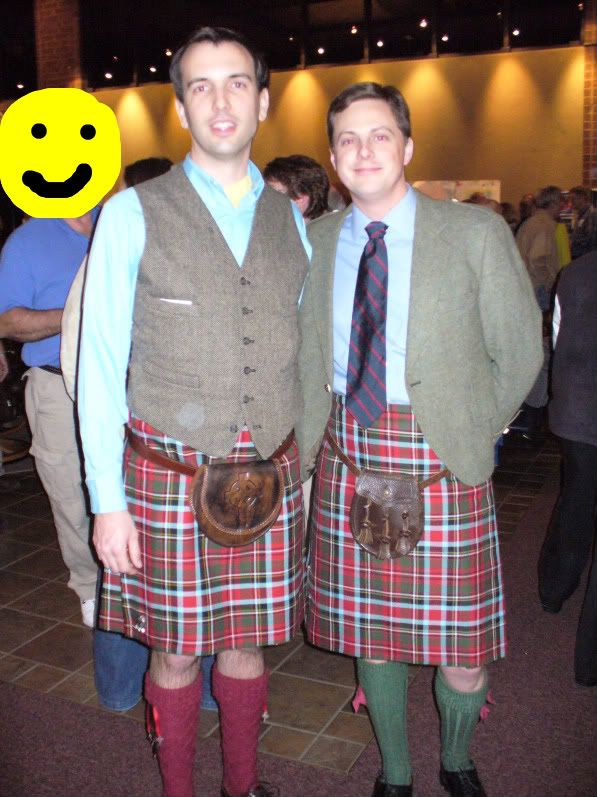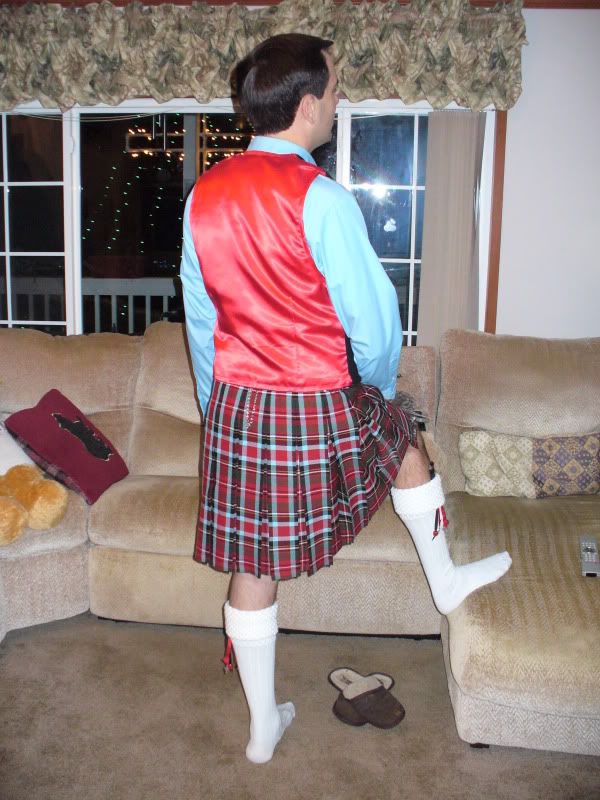|
-
17th June 11, 08:40 AM
#1
pleating to the sett vs. stripe
Is there a historical/traditional precedence for pleating to the sett vs. the stripe? Meaning, say…100 years ago, would someone generally pleat to the sett unless it was a regimental kilt?
Just thought I would ask…I realize in the end, one can decide to pleat however they choose. But I am not asking about “permission” to pleat in a particular manner--I am trying to understand the historical context (if there is any).
Thanks!
-
-
17th June 11, 08:57 AM
#2
As I understand it, pleating to the sett is a fairly modern idea starting around the 1900's, before that I think they pleated to, well, nothing in particular. I am not sure about pleating to the stripe and its historical timescale, but it is certainly regarded as more a military and pipe band thing, rather than a general civilian thing in Scotland.
Last edited by Jock Scot; 17th June 11 at 09:12 AM.
" Rules are for the guidance of wise men and the adherence of idle minds and minor tyrants". Field Marshal Lord Slim.
-
-
17th June 11, 09:26 AM
#3
As Jock says, pleating to sett is a fairly modern thing, early C20th, possibly the very end of the C19th.
Pleating to stripe was first been practiced by the military and can be traced to at least c1796 and a Gordon Highlanders' kilt now on display in Edinburgh Castle.
Early civilian kilts, those c1800, seem to have been pleated as it came so to speak and often there was no attempt to match to anything but by about 1810 civilian pleating started to follow the military practice of pleating to stripe. Bear in mind that most kilts were box pleated at that time and so it was the only way to pleat uniformly with less material.
Most kilts require more material to pleat to sett and as a result the amount of material 'in a kilt' has grown to the point that there are still some kilt makers that insist that to be a 'proper' kilt it must have 8 yards of cloth. Of course if you actually measure an 8 yard kilt you will often find that it has less depending on the sett and size of the individual.
-
-
17th June 11, 09:47 AM
#4
Thanks gentleman! That's exactly what I was looking for. I appreciate you taking the time to respond and share your knowledge.
-
-
17th June 11, 04:21 PM
#5
Peter beat me to it, but yeah - "what he said."
The first mentioning of pleating to sett in print is from The Kilt and How to Wear It by Ruardhi Stuart Erskine, c. 1901.
(I've got an article about that book here.)
He describes pleating to the sett as something rarely practiced but becoming more common. Little could he know that 100 years later it would be the norm!
When Peter talks about early box pleated kilts being pleated to stripe, this is what he means. This is a four yard box pleated kilt:

Here's a box pleated kilt made from six yards:

By contrast here is a modern eight yard knife pleated kilt pleated to stripe:

Notice the different appearance given by the narrower pleats of the higher yardage kilt.
What Peter says about pleating to sett requiring more material is generally true, but depending on the size of the sett this can sometimes be accomplished in a four yard kilt, as evidenced below.

-
-
17th June 11, 04:56 PM
#6
Matt,
without derailing my own thread, THANKS for the pictures...truly in this case pictures are worth 1000 words. I'll admit, I have been reluctant to do the box pleat style...but I REALLY like that 6 yard box pleat you posted.
Let me know if this next question is too off topic (probably) and more appropriate privately...
I understand you work with/for the STM, but you also have your own business. Do either of your "shops" do solid coloured wool kilts? I have 1 more kilt in my mind that I would like someday...I never really gave much thought to the box pleat until I saw your 6 yarder above.
-
-
17th June 11, 07:17 PM
#7
-
-
17th June 11, 07:24 PM
#8
No way is that too much!!!! That's a great comparison. Thanks! I love the Carolina tartan too. They both look fantastic.
Ideally I would have several kilts in the saame tartan with all manner of pleating patterns and variety of tartan length. Sadly, I can not have "one of each".
-
-
18th June 11, 04:05 AM
#9
Spartan,
To answer briefly, yes I'd be happy to supply a solid-color kilt for you, either though the STM shop or my own. You'll note there are slightly different ranges of kilt listed on either website, but whichever you choose we can do solids.
A note about David's MacDougal box pleated kilt above -- it is actually pleated to alternate stripes, because of the large size of the sett.
-
-
18th June 11, 05:06 AM
#10
It's one of the many matters pertaining to Highland Dress in which the military has been conservative, civilian Highland Dress more innovative.
All traditional military kilts are pleated to the stripe.
In modern civilian pipe bands it's around 50/50, with around half the bands following modern civilian tradition and pleating to the set and half following the older tradition of pleating to the stripe (or to the block).
If you get your kilt pleated the wrong way, they won't let you play with the band!

Last edited by OC Richard; 18th June 11 at 05:13 AM.
-
Similar Threads
-
By xman in forum Kilt Advice
Replies: 42
Last Post: 3rd April 10, 01:46 PM
-
By jhockin in forum DIY Showroom
Replies: 38
Last Post: 28th November 09, 06:13 AM
-
By g koch in forum General Kilt Talk
Replies: 11
Last Post: 29th November 08, 10:47 AM
-
By canawler in forum General Kilt Talk
Replies: 16
Last Post: 13th April 07, 09:56 PM
-
By MacWage in forum The Tartan Place
Replies: 12
Last Post: 4th July 06, 08:35 AM
 Posting Permissions
Posting Permissions
- You may not post new threads
- You may not post replies
- You may not post attachments
- You may not edit your posts
-
Forum Rules
|
|
























Bookmarks